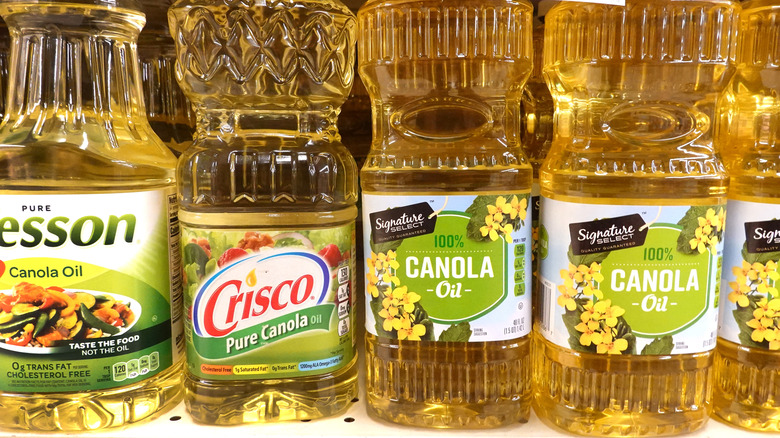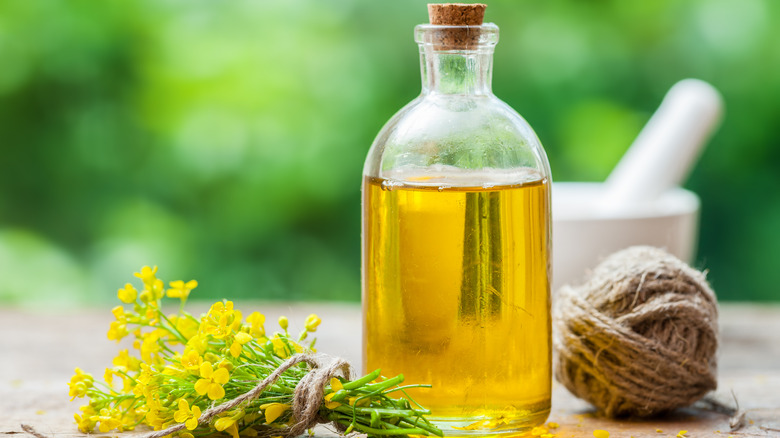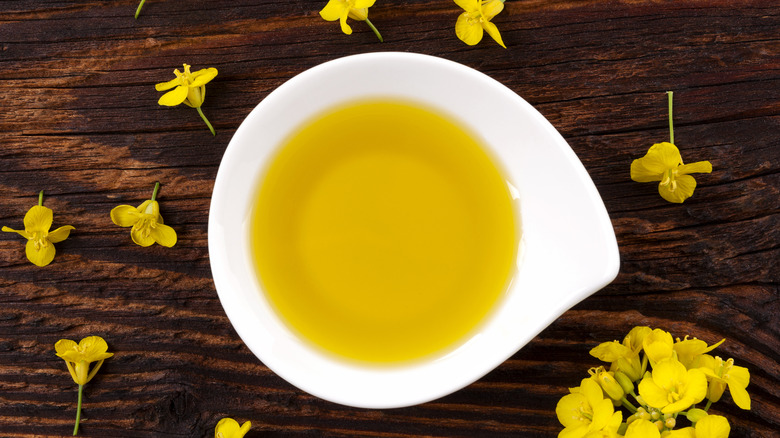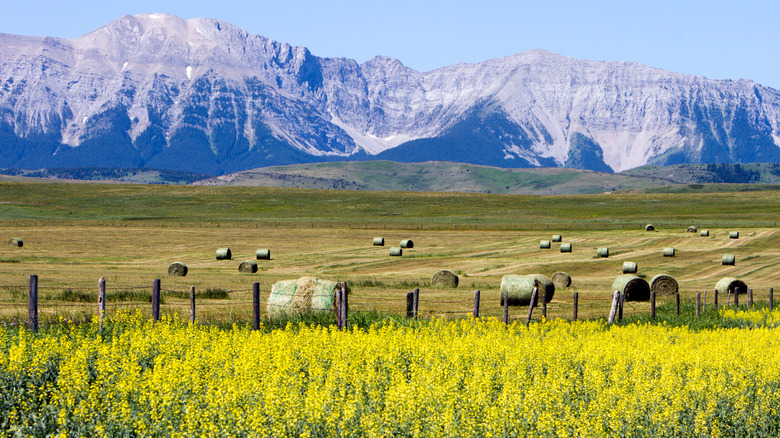Most Of The World's Canola Oil Comes From This Country
Chances are that you've never really thought much about canola oil. A bottle of the pale yellow oil is likely sitting in your pantry at this very moment, and you've probably used it in all sorts of culinary creations. But, you might be surprised to learn that, despite the fact that Americans consumed a total of over 2 million metric tons last year (via Statista), there's actually another country that's leading canola production — just look north.
The vast world of vegetable oils can be tricky to navigate as they can be made from nuts, seeds, grains, and even beans. In the case of canola, however, the oil is actually made from a yellow flower called rapeseed. Part of the Brassicaceae family, Canola Council of Canada explains that the canola plant's flowers develop into pods containing super small black seeds that are harvested and crushed, releasing oil that's then processed and refined into the cooking oil that we're familiar with.
Canola oil is a great 'neutral' option for cooking
A neutral oil with a high smoke point, Bon Appétit reports that canola is quite versatile. It can be used in salad dressings, marinades, baked goods, and even for deep frying. With no shortage of applications, it's fair to wonder which country is in charge of producing all this oil.
Straight from the land of maple syrup and poutine, add canola oil to the list of great Canadian inventions. According to the Agricultural Marketing Resource Center, roughly 20% of the world's entire canola oil supply is produced in Canada, which accounts for over 70% of the global export trade.
When you think canola, think Canada
While canola can be turned into feed for livestock and even renewable biofuels, its role as a cooking oil remains unmatched. In fact, the Canadian Canola Grower's Association reported that in 2020, over 18 million metric tonnes of Canadian canola oil was produced, with exports valued at almost $12 billion.
Developed in the late 1970s by scientists in Saskatchewan and Manitoba, CropLife explains that canola oil was the result of selective plant breeding techniques aimed at minimizing undesirable compounds like erucic acid. That said, the name canola is actually a riff on where the oil was developed and what it is (Canadian oil, low acid) — pretty interesting, eh?
Why Canada?
Though originally hailing from India, the rapeseed plant (which canola oil is made from) grows particularly well in Canada, explains the Canola Council, thanks to the country's cool climate. It may, however, surprise you to learn that the plant wasn't brought to Canada for the oil's culinary applications, but rather its industrial ones.
As the oil adheres particularly well to metal washed with steam, canola oil began being used to lubricate boat engines after the invention of steam power. During World War II, the demand for Canadian canola oil grew, as a blockade was preventing the Allied forces from importing canola oil from Europe or Asia. After success in limited trials, Canadian farmers began cultivating more of the plant to end North America's canola oil shortage.



